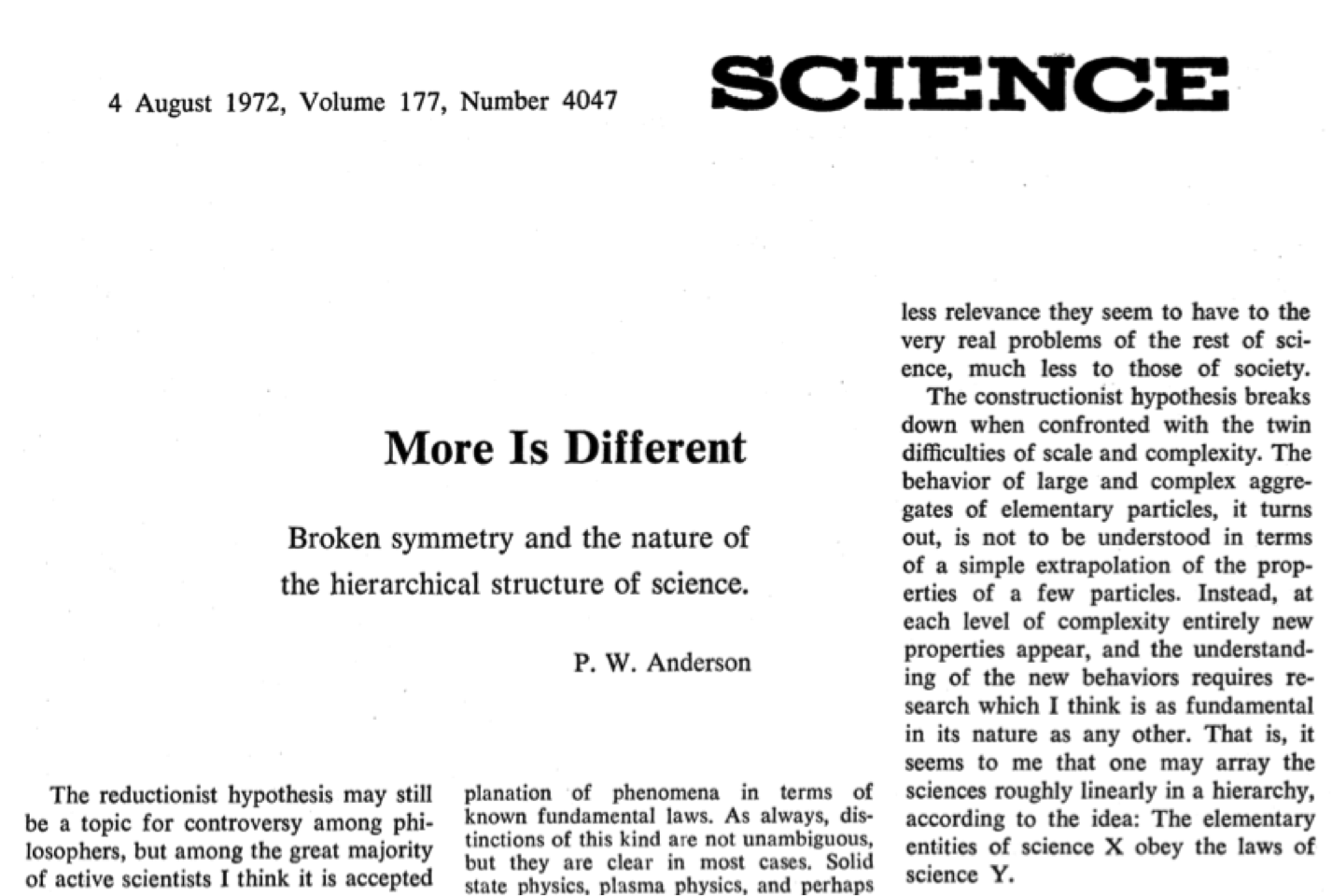For a long time, the nature of science was essentially reductionist. That is to say, science would assuredly explain topics reductively, and analysing them into smaller components. Every component is then eventually reduced to interacting molecules, and then to forces between atoms, and so on. This vision of science is profoundly mistaken as it not only assumes explanations are sufficient by analysing a system into smaller, simpler systems (which disregards fractal-like structures, e.g. mandelbrot set), but assuming causes precede events, every explication is eventually reduced to the big bang.

“More is different” – Or why the approach to air transportation should evolve
Seddik Belkoura
Some systems fall outside the scope of reductionism and, thankfully, science has evolved with new ways of dealing with reality. New theories, contrary to reductionism, allow predictions and explanations at every level of hierarchy. No one actually expects to extract laws of psychology from forces between atoms (mainly because it would be computationally intractable, not to mention impossible to present in an intelligible way when tractable). In fact, under specific circumstances, the complex behavior of a vast number of entities (be it particles or aircrafts) resolves itself into a measure of simplicity and comprehensibility, or “emergence”, in which high-level simplicity emerges from low-level complexity. In 1972, Anderson (1) elegantly defined these systems through the idea that “more is different”; highlighting that the high-level behaviors of some systems cannot be deduced from the low-level properties of their constituting elements, as important information is codified in the interactions between these elements.

These systems, as commonly called Complex Systems, are increasingly studied through the lens of the theory of Complex Networks. Applied in fields ranging from biology to economics and sociology, it’s studied that the interaction between elements of a system is paramount to the elements themselves. In aviation, reactionary delays, for instance, perfectly fits into this situation. Reactionary delays are delays caused by late arrivals, from the aircraft or crew, stemming from previous flights. Relatedly, continuous interactions between flights in the air transportation system may also create the propagation of a delay. It is very difficult to modelise reactionary delays, mainly due to the complexity of the interactions and of the absence of data to describe them (generally, there are no information about crew assignments or airlines slot strategies available). Therefore, the solution resides within a higher-level approach, focusing at the information flow (in this case, delays) within the system which is the result of all sub-jacent interactions. We believe that to improve our understanding of complex systems dynamics, we must pass through the use of adequate frameworks such as Complex Network theory. The paper presented by Seddik Belkoura at the 7th International Conference on Research in Air Transport (ICRAT) in Philadelphia called “Phase changes in delay propagation networks” (2) is an additional resource that explains the type of system information that can be extracted from adopting a more macroscopic point of view. Using the Complex Network framework and data mining strategies, the paper shows how the study of interactions directly from data can enable the extraction of insightful information about delay propagation patterns in Europe. This approach was also applied to the Chinese air transport system in “Network analysis of Chinese air transport delay propagation” (3).
(1) Anderson, P. W. (1972). More is different. Science, 177(4047), 393-396.


